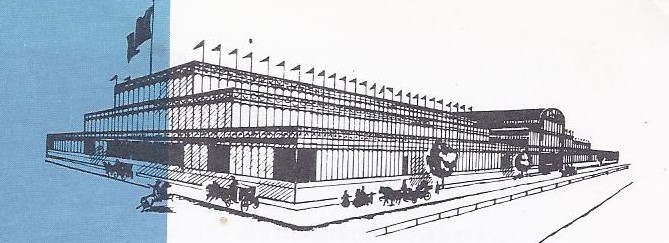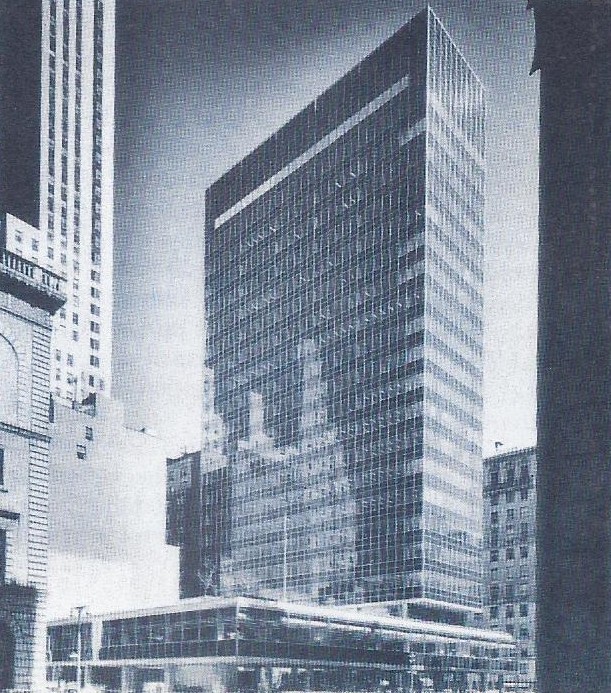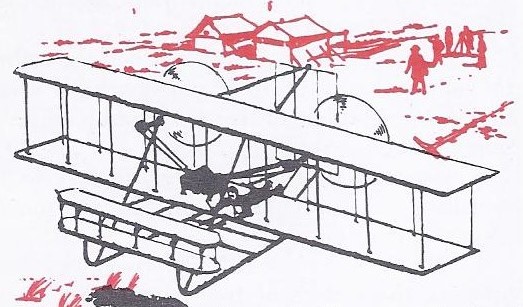It was the evening of December 17, 1903, when Bishop Wright in his home at Dayton, Ohio received the following telegram:
SUCCESS. FOUR FLIGHTS THURSDAY MORNING ALL AGAINST TWENTY ONE MILE WIND. STARTED FROM LEVEL WITH ENGINE POWER ALONE. AVERAGE SPEED THROUGH AIR THIRTY-ONE MILES. LONGEST FLIGHT FIFTY NINE SECONDS. INFORM PRESS. HOME CHRISTMAS.
ORVILLE WRIGHT
This telegram tells simply and directly the story of the first successful motor-powered flights in an airplane. In these days, when planes make regularly scheduled flights across oceans and jet-powered planes exceed the speed of sound, we take air travel for granted. At the turn of this century, this brief adventure in the air by the two Wright brothers was a breath taking event. Most people scoffed at the famous English writer, H. G. Wells who the year before had daringly written that “before the year 2000 and very probably before 1950, a successful aeroplane will have soared and come home safe and sound.”
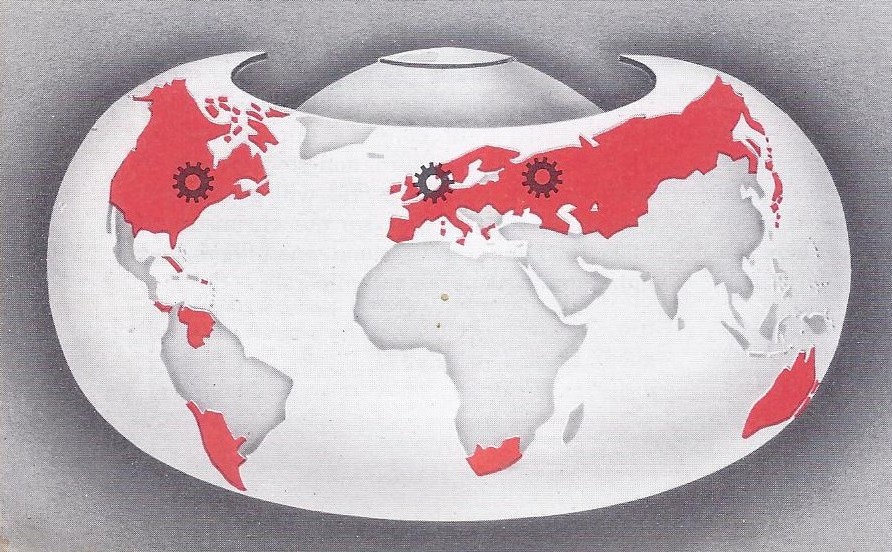
Important as was the Wright brothers’ successful flight, it was only one of many startling advances made in the first half of our century. We have seen how modern science and invention made great progress during the 1700’s and 1800’s. This progress not only affected ways of living at that time but paved the way for even more startling developments. From 1900 to 1950 man’s ability to travel and communicate, produce goods, promote health and add to his comfort and well-being moved forward with lightning speed. Here we find answers to the following questions:
1. What advances did science make in the first half of the twentieth century?
2. How did science and invention speed up communication, transportation and industry?
3. What further changes came about in people’s interests and ways of living?

1. What Advances Did Science Make in the First Half of the twentieth Century?
The statement that “knowledge is power” – Scientific knowledge has increased man’s power to cure disease and to promote health. It has created new products, developed new processes and devised new machines. Armed with the knowledge already acquired, scientists in the first half of the twentieth century (the 1900’s) experimented tirelessly to discover new principles and to apply their findings in practical ways, Their progress was truly astounding.
Medical science made great strides in preventing disease. In no field was progress more apparent than in medical science. More and more, doctors and laboratory scientists turned their attention toward preventing disease. They made new advances, building on the pioneer work of Pasteur and Robert Koch, a German doctor who also made important discoveries in the study of bacteria. By the patient efforts of many scientists, the germs which caused many dreaded diseases were discovered and studied. Then various methods were developed to render these germs harmless:
(1) Pasteur, had discovered that some germs could be killed by heat. Germs present in water, milk and foods were made harmless by subjecting them to high temperatures.
(2) Other germs are carried through the air or by insects or other animals. To reduce disease from these and other sources, new principles were developed for healthful and sanitary living, including proper storage of food.
(3) Medical science also sought to build up people’s resistance to disease. The principle of vaccination, stumbled upon by Jenner and proved scientifically by Pasteur, led to the wide-spread use of inoculation. By the injection of small amounts of a particular germ into the blood stream, the body becomes protected from, or immune to, more violent attacks of the same germ, Probably you have had inoculations or “shots” yourself or have heard servicemen describe the inoculations that made them immune to diseases to which they were likely to be exposed.
As a result of these new discoveries and practices, mankind has been largely freed from the danger of plagues, or epidemics, which used to sweep whole continents.
COUNTING BY CENTURIES
- Here we find frequent references to “the 1900’s.” Another name that you often hear for the 1900’s is the twentieth century. A century, is a period of 100 years. Why, you may ask, should years beginning with “19-” be called the twentieth century?
- To answer this question, we must go all the way back to the birth of Christ. What were the numbers of the first hundred years after Christ? One to 100, of course! This was the first century after Christ. The next hundred years were 101, 102, 103, and on up to 200. These were “the 100’s” or the second century after Christ. Similarly the third century included “the 200’s” (201-300), and so on.
- Notice the following facts about the naming of centuries:
- (1) Each century begins with a year whose number ends with 1, like 1801 and ends with a year whose number ends with 0, like 1900.
- (2) The first 99 years in each century begin with a number which is one less than the number used as the name of the century. Only the last, or hundredth, year in each century begins with the same number as the name of the century.
- We speak of the century in which we live as “the twentieth century” or “the 1900’s,” and the previous century as “the nineteenth century” or “the 1800’s.”
Furthermore, certain contagious diseases which formerly killed large numbers of people no longer claim many victims. One or two examples furnish striking proof of these advances. During the Spanish-American War in 1898, more American soldiers died in Cuba from yellow fever than were killed in action. Experiments by Major Walter Reed and others, who deliberately exposed themselves to infection, led to the discovery that yellow fever was carried by a certain kind of mosquito. When breeding places of the mosquito were cleared up and sanitation methods improved, yellow fever no longer ranked as a major killer. Similarly, inoculation for typhoid fever and diphtheria has greatly reduced the deaths from these two diseases. In 1900, out of every 100,000 Americans 80 died from typhoid fever and 40 from diphtheria. Forty years later only one American in 100,000 died from each of these diseases. Since 1950 the development and widespread use of new vaccines have given hope of conquering the dreaded disease of polio.
Scientists learned much about the chemistry of foods. It is fairly easy to count deaths caused by contagious diseases. It is impossible to estimate how many deaths resulted directly or indirectly from lack of nourishing food. Until early in the twentieth century scientists knew very little about the chemical properties of food. Then in 1913 an American named Elmer McCollum discovered Vitamin A, a substance found in cod-liver oil, liver, eggs and certain vegetables. Discovery of other vitamins followed. Scientists learned that these substances helped the body to fight disease and promoted growth, they called them vitamins (from the Latin word vita, meaning “life”). Besides discovering vitamins in foods, chemists found ways to make vitamins in the laboratory.
Not until recently have doctors and nutrition experts learned much about balanced or proper diets. They have discovered that the quantity and variety of energy foods needed for healthful living varies from person to person and depends on the amount of physical activity. (A growing teenager usually needs from 2500 to 3000 calories, or units of food energy, per day.) When the vitamin content as well as the energy-giving qualities of foods became known, balanced diet also became a possibility. The right quantities of the right foods help to prevent certain diseases and promote general health. During World War II, even though the British people were severely restricted in the amount of food they could buy, the general level of health in Great Britain actually improved through properly balanced diets.


New cures were found for old ills. Many new weapons for fighting disease were developed between the year 1900 and the outbreak of World War II. For example, two Canadian scientists, Banting and Best, discovered a substance they called insulin. Insulin injections have helped people suffering from diabetes to live long and normal lives. The sulfa group of drugs and penicillin, best known of the mold drugs, were also developed. These “wonder drugs” proved effective in fighting many serious types of infection.
Radium and radioactive materials, discovered by Marie and Pierre Curie, have helped in the constant war against Cancer. So has the X-ray, discovered in 1895 by Roentgen, a German. Doctors, dentists and surgeons also use X-ray in the diagnosis and treatment of human ailments and in operations. A great deal has been learned about allergies, or sensitivity to certain foods, pollen from plants and trees, or even dust particles. New treatments for burns have been discovered and much has been learned about curing diseases of the bones. Increased knowledge of the human body and new operating methods have enabled surgeons to perform delicate operations hitherto considered impossible. Although most of these medical and surgical advances were discovered before the outbreak of World War II in 1939, the need to care for servicemen and to maintain good health among civilians helped to bring about great medical progress during the 1940’s.
TIMETABLE PIONEERS IN HEALTH IMPROVEMENT
Harvey (British) explained the circulation of the blood and the working of the heart, 1628
Van Leeuwenhoek (Dutch), using the microscope, discovered red corpuscles of the blood and observed bacteria for the first time, 1674-1683
Jenner (British) showed that vaccination could prevent smallpox, 1796
Lang, Wells and Morton (American) pioneered in the use of anesthetics in surgery and dentistry, 1842-1846
Florence Nightingale (British) began reforms in the training of nurses and care of the Sick, 1854
Pasteur (French) discovered that bacteria are the cause of decay, 1862
Lister (British) proved that antiseptics could prevent infection caused by bacteria, 1865-1867
Koch (German) made the study of bacteria a science, discovered the germs of tuberculosis and cholera, 1882-1883
Pasteur (French) made first successful inoculation against rabies, 1885
Roentgen (German) discovered X-rays which reveal hidden diseases,1895
Becquerel (French) and the Curies (Polish French) discovered radioactivity and radium, used to fight cancer, 1896-1898
Reed (American) learned that yellow fever could be stamped out through mosquito control, 1900
McCollum (American) discovered Vitamin A, 1913
Banting and Best (Canadian) discovered insulin for relief of diabetes, 1922
Fleming (British) discovered penicillin as a bacteria killer, 1928
Domagk (German) tested first sulfa drugs against infection, 1932-1935
Salk (American) announced development of first vaccine against polio, 1953
Scientists probed the effect of the mind on the body. Psychologists (students of the mind and doctors also discovered that many illnesses of the body stemmed, in part at least, from the workings of the mind. For example, during World War I much was heard about “shell shock.” A soldier would be found paralyzed or blind, but there would be no apparent reason for his trouble. It was discovered, however, that in such cases the soldier’s unconscious desire to escape from the danger and horror of battle had actually brought on the paralysis or blindness.
Even in peacetime, worry and strain may have much the same effect. Doctors nowadays are more on the alert for mental disturbances among their patients than they used to be.
Medical advances resulted in healthier and longer lives. Preventive medicine, knowledge of nutrition, new cures, treatments and attention to mental disturbances, then, helped people to live longer, healthier lives. To be sure, as this century progressed, doctors found more cases of heart trouble, high blood pressure, ulcers, cancer, and other non-contagious illnesses. These illnesses were often the result of a longer life span; they did not mean that a larger proportion of people have poor health. Older people, like automobiles that have been driven thousands of miles, are more likely to be in need of repair than are younger people. As more and more men and women lived longer lives, old persons’ ailments increased. In spite of this fact, in Western countries the average life span almost doubled during the 1900’s.
Scientific progress in all fields had certain things in common. Not only in medicine but in all fields of science, tremendous advances were taking place during the early years of our century. There is space here to mention only a few, but no matter what the field –physics, chemistry, biology, astronomy, geology — there were three common factors: (1) Each new discovery depended on something that had been discovered before. (2) Scientists from many nations contributed. (3) progress in one field of science often contributed to progress in another.
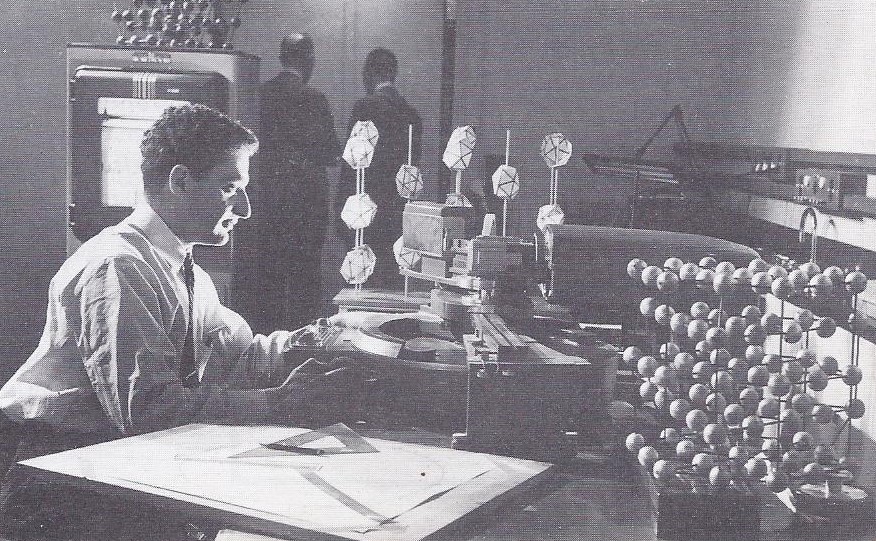
Atomic energy was developed. These points are clearly illustrated in the most far-reaching discovery of our times — atomic energy. In 1803 a British chemist, Dalton, announced that all matter is made up of tiny particles called atoms. According to Dalton, atoms could not be divided or broken down. (This theory was similar to that of the ancient Greeks; indeed the very word atom is borrowed from the Greek language and means “impossible to cut”) By the beginning of the twentieth century, however, scientists had progressed far beyond Dalton’s theories. Lord Rutherford, an English scientist, and Niels Bohr, a Dane, had developed new theories of the atom. Their studies led to the conclusion that atoms themselves are made of even tinier particles and that atoms are held together by a binding force much as the planets are held in their paths around the sun by gravitation.
Meanwhile a French scientist, Becquerel, had discovered rays leaking from an element called uranium. On the one hand, his discovery led Pierre and Marie Curie to explore radioactive materials. On the other hand, physicists became convinced that these rays were given off because the atoms were breaking up. Then came the theory of the famous scientist Albert Einstein that matter and energy are the same thing. Einstein calculated the tremendous energy which could be released by splitting atoms.
During the 1920’s and 1930’s such scientists as Lawrence (American), Fermi (Italian), Hahn and Meitner (German) and others worked on the problem of splitting the atom. Lawrence had even developed a cyclotron, or atom smasher, by 1930. Not until World War II began, however, did these experiments come to a head. Then, scientists from many countries, headed by Vannevar Bush and assisted by members of the American Armed Forces, worked frantically against time on a huge secret project. The result was the atomic bomb. Science, long thought of as man’s greatest helper, could also be his destroyer! During the 1950’s man developed peaceful uses for atomic energy whether or not he would also use it to destroy himself depended on his ability to avoid wars.
Chemistry greatly enriched living. Since 1900, besides increasing our understanding of chemical laws, chemists in their laboratories have added greatly to our personal comfort. Chemists contributed to better health and longer life by developing sulfa, mold drugs, insulin and a knowledge of vitamins. Chemists have also derived better and better grades of gasoline from crude petroleum. They have supplied us with a variety of plastics and other synthetic materials. Many of these synthetics are better or cheaper than natural materials. Nylon, for example, is in some ways more satisfactory than silk, yet is made basically from coal, air and water. Chemists developed synthetic rubber, thereby making us less dependent for this essential product on natural rubber-producing trees in distant tropical countries. Finally, chemistry has proved a boon to farmers in two ways: (1) By providing better fertilizers, chemistry has stepped up farm production. (2) By finding uses for increasing amounts of plant life such as soybeans in synthetic goods, chemistry has broadened the market for farm products.
EINSTEIN’S FAMOUS FORMULA
E=mc2
E=energy
M=mass or matter
c -speed of light (186,000 miles per second)
Atomic scientists used this formula in converting matter into tremendous amounts of energy.
2. How Did Science and Invention Speed up Communication, Transportation and Industry?
If a severe flood or snowstorm or a tornado should strike your town, the usual routine of daily living would be seriously upset. Ordinary communication would become impossible because telephone lines were down. Food shortages would occur because the roads were blocked. The appliances in many homes — oil heaters, refrigerators, vacuum cleaners, even toasters –would be useless if electric service were interrupted.
These and many other handicaps to normal living would help to remind you that science and invention serve us every day, even every hour. We read how science and invention were applied to industry before our century began. After 1900 advances in these fields brought even greater changes. Progress was especially striking in communication and transportation.
Science and invention have overcome distance. For practical purposes, distance is a matter of time rather than space. If you buy a house on the outskirts of a city, it is more important to know that it is a 20-minute bus ride from your home to the heart of the city than to know that the distance is five miles. If you have business with a stranger in a distant town, you do not ask, “How far away is he?” but “How soon can I get in touch with him?” From this practical standpoint, the world has shrunk tremendously within the lifetime of many living persons. Recent strides in scientific invention have made it possible to send messages more quickly between widely separated points.
Communication by telephone became widespread. When Alexander Graham Bell first exhibited his weird-looking telephone instrument in 1876, few people took it seriously. By 1900 only about a million telephones were in use, but after that time the number multiplied rapidly. Telephones were not used to the same extent in all countries. Soon after World War I, for example, when the population of the United States was about 105 million people, there were approximately 13.5 million telephones in use. This amounted to one telephone for about every eight people. No other country had as many telephones in proportion to the number of people. In Belgium, itself a highly industrialized county, there was about one telephone for every 120 people. Countries which had made little industrial progress had even fewer telephones.
During recent decades the number of telephones has increased rapidly. By 1950 there were over 70 million telephones in use, of which the United States had well over half. Moreover, the range of telephone communication grew. In our day, telephone conversations that span the Atlantic and Pacific Oceans can be carried on as easily as could calls a few miles away 50 years ago. Developments in radio made these long telephone connections possible.
Wireless telegraphy made swift communication possible. Credit for developing “wireless” telegraphic communication belongs to the Italian Guglielmo Marconi. He had studied the reports of scientists about electromagnetic waves and had worked out ways to send wireless messages by means of these waves. In 1910 the first wireless telegraph message was flashed 1800 miles across the Atlantic. Communication by wireless telegraph provided a great boon to ships in distress. This fact was strikingly shown in 1912 when the ocean liner Titanic struck an iceberg. Though hundreds of passengers were lost, those who survived owed their lives to vessels which raced through the icy waters of the North Atlantic in response to the distress signals of the sinking ship.
Radio provided mass communication. The ancient Greeks used to say that a democracy could not exist in any community so large that all its people could not hear the voice of a speaker in a public meeting. Thanks to modern methods of communication, this limitation on the size of a democracy no longer exists. In particular, radio has made it possible to broadcast sound over great distances to millions of people at the same time. The wireless telegraph has been largely replaced by the radio telephone, usually referred to merely as radio. Various improvements, including De Forest’s vacuum tube, made radio broadcasting practical soon after the end of World War I.
In the early 1920’s people wearing earphones crowded around tiny sets to hear the first regularly scheduled broadcasts. Static brought forth yowls and squawks that interfered greatly with reception and the first loud-speakers were very unsatisfactory, but radio improved rapidly and by 1980 there were 13 million receiving sets in the United States alone. By the mid-1930’s millions of Americans could hear “fireside chats” by their President as well as their favourite news commentators, comedians, crooners and orchestras.

Motion pictures provided entertainment and information. Even before radios were in common use, motion pictures were being viewed in thousands of theatres. Late in the nineteenth century Thomas Edison experimented with series of photographs taken in rapid succession to give the effect of motion. Motion picture cameras and projectors were greatly improved in our century. Colour and sound were perfected and added by the 1930’s. Millions of people not only in the United States but in other countries became regular movie-goers. Not only were they entertained, but through newsreels and travel pictures they became familiar with scenes they had never visited and voices they had never heard. Movies also offered schools a new tool for learning.

Means of mass communication were capable of great good or evil. Television became important after the close of World War II. Since then it has grown by leaps and bounds. Although more families in America enjoy this most recent marvel of communication than elsewhere, there are television sets in many countries. Radio, movies and television are all great advances in mass communication. A single voice reaches tens of millions of people with the same message, but with all their benefits, radio, movies and television present grave problems. If controlled by tyrants, they can become weapons to stir up hate and war, as did radio when misused by Adolf Hitler in the late 1930’s and early 1940’s. In democratic countries, which believe in freedom of speech and press, it is important that no one group or interest control these facilities for selfish purposes. Good taste and the needs of national security are the only sound reasons for limiting freedom of expression through these means of communication.
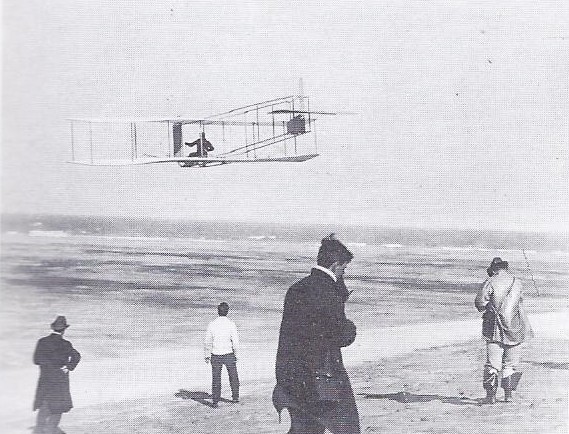
Transportation by automobile grew. Improvement of means of transportation has taken place side by side with improvement in communication. Travel time was greatly cut by the invention and development of the steamboat and the railroad. In the late nineteenth century there were also a few automobiles that bounced and rattled along poor roads at perhaps fifteen miles an hour. During the early years of this century these slow, chugging “horseless carriages” were tansformed into powerful cars. As a result, the narrow dirt roads had to be replaced by wider, paved highways to take care of increased automobile traffic.
The widespread use of private automobiles, motor buses and motor trucks cut into the business of railroads and the waterways. This development was most pronounced in the United States, where there are as many private cars as there are private homes. In Europe, many more people ride on bicycles than in motorcars, but in almost all countries there are enough automobiles, trucks and buses to revolutionize transportation.
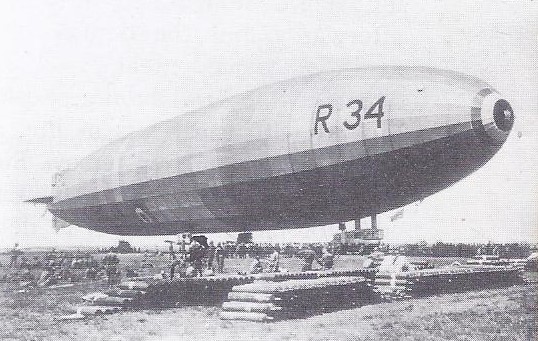
Air transportation developed after World War I. Serious attempts to conquer the air were made in balloons in the eighteenth century these flights were exciting adventures, but balloons were too much at the mercy of the winds to be useful in carrying freight or passengers. In 1901, however, the Brazilian Santos Dumont flew a dirigible balloon (one which had an engine and could be steered). A little later the German Count Zeppelin perfected a long, rigid, cigar-shaped airship. All such craft are “lighter than air,” made so by the lifting power of hydrogen or helium gas. “Zeppelins” were used as bombers during World War I and in transportation afterwards, but the danger of fire and explosion proved great. In 1937 a giant zeppelin, the Hindenburg, exploded and burned with great loss of life, as it was about to land in New Jersey. Such catastrophes caused interest in lighter-than-air craft for passenger travel to decline.
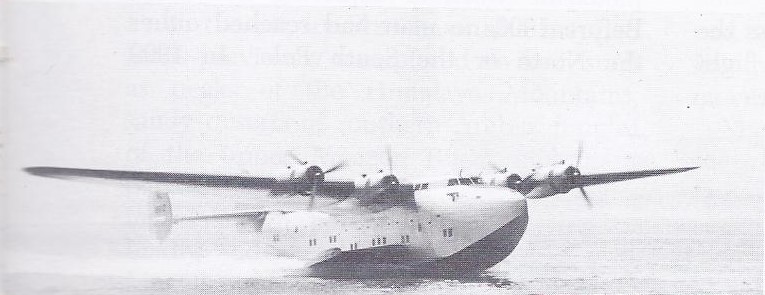
Meanwhile the Wright brothers and others worked tirelessly at improving the heavier-than-air machine powered by the internal-combustion engine. When World War I broke out in 1914, men hardly dared fly an airplane in a high wind. Before it ended, however, airplanes had developed into important weapons. Soon after peace was restored, fliers attempted to cross the Atlantic. Charles Lindbergh’s solo flight from New York to Paris in 1927 stirred public interest in aviation, as did numerous later flights.
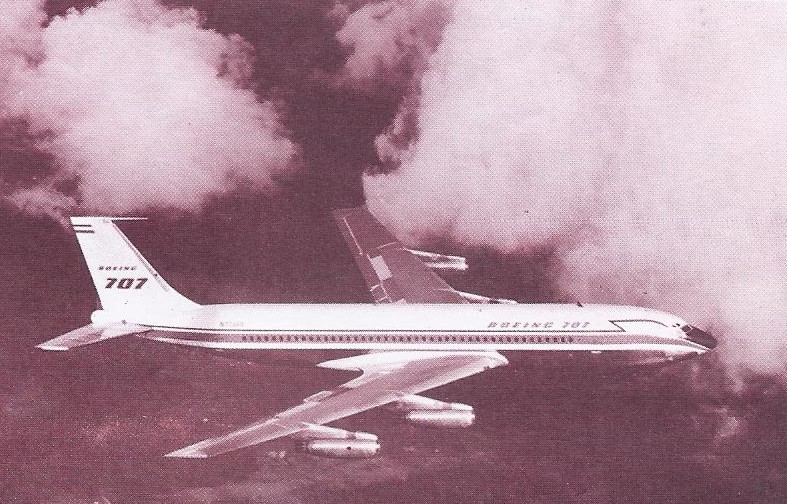
During the 1930’s the world entered the “air age.” Air flights were no longer limited to venturesome pilots. Commercial airlines in the United States and Europe multiplied. Larger and speedier passenger planes were developed. Air express and mail services became regularly established and long-distance passenger travel began. A network of air routes developed between the United States and Latin America and across the Atlantic and Pacific Oceans.
World War II, even more than World War I, speeded up improvements in air transportation. Transoceanic travel in particular spurted forward, so that one could fly to every inhabited continent. On this very day, hundreds of men and women are flying across wide oceans with perhaps less concern than people 100 years ago felt about taking a 100-mile railroad trip.

Our own planet has now been almost completely explored. Swift communication and transportation helped to complete the work of exploring the earth. Before 1900 no man had reached either the North or the South Pole. In 1909 Peary, an American, reached the North Pole. Three years later a Norwegian, Amundsen, reached the South Pole. Both expeditions had to cross the icy wastes on foot and by sledge. In the 1920’s, however, an American aviator, Richard Byrd, flew over both poles by airplane. From the air, aviators have also mapped lands previously unexplored on foot, such as peaks of the Himalaya Mountains, sandy deserts of southern Arabia, jungles of the upper Amazon River and large parts of Antarctica. The work of exploring unknown portions of the globe, so boldly advanced by Columbus and Magellan, is completed. Now, men’s efforts have turned from the exploration of their own planet to penetrating the unknown regions of outer space.

Mass production accounted for the vast increase of goods. Automobiles, radios, airplanes — our abundance of these and of most of the other articles we use today has resulted from new methods of production developed since 1900. These have brought about mass production, so called because it makes possible the production of huge quantities of goods. Mass production is based on: (1) widespread use of interchangeable parts developed by Eli Whitney; (2) inventions of many kinds of labour-saving machines; (3) division of labour into many separate operations; and (4) gathering materials and workers together along an assembly line where the product “grows” as it moves.
Mass production was first practiced successfully on a large scale by Henry Ford in the making of automobiles. Ford’s aim was to produce cars so cheaply that they could be purchased by persons of ordinary incomes. Workers were stationed beside a long assembly line. As the bare frame of a car moved slowly along this line, various parts were added. Each worker performed a single operation over and over again. The methods used so successfully by Ford were applied in many other industries and spread to other manufacturing countries. Mass production, however, has been used most effectively in United States. America’s ability to produce vast quantities of goods was a vital factor in winning World War II.
Mass production brought large business and labour organizations. To be successful, mass production requires huge amounts of raw materials. It requires constant research to develop better machines and more efficient processes. It also requires careful planning of production methods. Obviously mass production can best be carried out by large concerns with plenty of capital. Since 1900, therefore, the trend toward larger business and industrial organizations has continued.
This trend has been matched by the growth of larger and more powerful labour unions. Local unions united in nationwide organizations and these in turn formed international bodies. Ways and means were sought for settling disputes between workers and employers by referring disputes to an unprejudiced outsider satisfactory to both parties. This is called arbitration and has been one of the most useful means of avoiding strikes.

Science and industry have enabled us to do more work and more kinds of work. To sum up, science has greatly increased our ability to control, change and use our environment. A Roman considered himself rich when he was served by as many as 40 slaves. Would it surprise you to know that with the help of power-driven machinery, every American has the equivalent of 40 slaves? Such is the recent estimate of an American engineer. Or to put it another way, the United States, with about one-sixteenth of the world’s population, can do more than twice as much work as the whole world could do by hand labour alone!
There are also many things we can do with machines that no number of people could do without them. An army of Egyptian slaves building a pyramid could drag as many stones as a modern freight car can carry, but they could not move that load at 40 miles an hour. A million voices shouting together would make quite a racket, but could not be heard as far as a whisper over a telephone wire or as far as radio can broadcast the tick of a watch. The same principle applies to pleasures and recreation. A Roman Caesar could command a thousand slaves to dance before him, but he could not watch a motion picture. He could dine on nightingales tongues, but he could not skim along one of the fine Roman roads in an automobile. He could invite the greatest poets to his court, but he could not read their poems in clear print by a bright electric light.
Remember, too, that the benefits of modern science, invention and industry are not for a favoured few but are available to millions. People in modest homes can hear the same music as men and women seated in the best seats of an opera house. Motion pictures and television bring to country villages the same world-famous actors who appear in Broadway theaters.
3. What Further Progress Came About in People’s Interests and Ways of living?
During the first half of the twentieth century changes in habits and ways of living in Western countries (Europe and America) were even more rapid than they had been in the nineteenth century. Many of these changes were the direct result of advances in science and invention which have already been mentioned.
Cities grew larger as population increased. In our century the population of the Western world has continued to grow. In the United States alone population doubled (from 76 to 150 million) between 1900 and 1950. Moreover, city and town population increased as a larger and larger proportion of all the people moved from farms to towns. The shift to cities and towns, however, was gradual. Back in 1870 only England and Belgium had more people in cities and large towns than in small towns, on farms and in the country. In the United States it was not until 1920 that half the population could be classed as urban (city and town dwellers).
Local governments took on added responsibilities. As cities and towns grew in size and number, new problems arose and old problems became more pressing. About 100 years ago a group of Englishmen, appointed to study national health needs “for civilized living,” listed the following: (1) ample supplies of pure water; (2) prevention of water pollution; (3) sewage disposal and removal of refuse; (4) regulation of road, street and building construction; (5) provision for healthful housing; (6) smoke control; (7) food inspection; (8) prevention and control of disease; (9) regulation of burials. Today people take it for granted that their local governments will provide such services and will set up and enforce the needed regulations.
Solving these problems was not easy, as a few illustrations from Great Britain will indicate. The factory system resulted in crowded and unsanitary housing for workers. In 1909 England’s towns and cities got the right to tear down old, ill-ventilated dwellings and replace them with better ones. From 1907 to 1914, in London alone, 100,000 people moved into new apartments. Zoning, too, became a responsibility of local governments. Certain kinds of buildings, such as factories, were restricted to particular areas. Restrictions on how buildings should be built became more and more necessary in crowded cities and in an age when tall buildings increased in number.
Development of adequate water supplies took time, too. In the 1800’s few houses in Britain had running water. For their household supply, people went to the outlet at a street comer at certain times of the day when water was flowing. Even as late as 1850 the water in 31 of the largest towns and cities in England was impure as well as insufficient in quantity. Water-supply systems, more over, were often privately owned. It was not until 1915 that the great majority of British towns and cities owned their water supply systems.
Governments increased their responsibilities for general welfare. The early 1900’s saw a wide extension in government responsibility for people’s welfare and security. Old age pensions, illness, unemployment insurance and regulations to provide payments to injured workers became widespread. Bismarck introduced a security program in Germany. Shortly before World War I there were about 13 million people in Germany who had insurance against illness and 20 million who held accident insurance. The costs were shared by the workers and employers, with the central government contributing a portion. Similar insurance programs were developed in Great Britain, in Switzerland and in France. In the United States social security system was started in the 1930’s.
Interest in social problems continued. Some students of public affairs began to fear that governments were taking on too much responsibility and leaving too little to the people. They feared that these practices were signs of “creeping Socialism” that would threaten free enterprise. Others favoured continuing the humanitarian, or public welfare, movement which had begun in the nineteenth century. More business leaders came to believe that workers who were decently paid, housed, clothed and fed did better work than those who were not. Reform minded people supported government and private programs to remove social evils. Interest in social problems had important results. In all enlightened countries human slavery had come to an end. There was progress in the treatment of the insane as sick people rather than as criminals. Working conditions improved; parks, playgrounds and camps were opened. International welfare organizations, most of which had already been formed, expanded their efforts. Thus the Red Cross, founded by Jean Henri Dunant in 1864, became a worldwide agent of mercy in wars, floods, famines and other disasters. The Salvation Army, founded by William Booth in England in 1878, grew into an international organization for helping the unfortunate. Churches redoubled their missionary efforts in backward countries. In Catholic countries, the Clergy, led by Pope Leo XIII, took a deep interest in social problems.
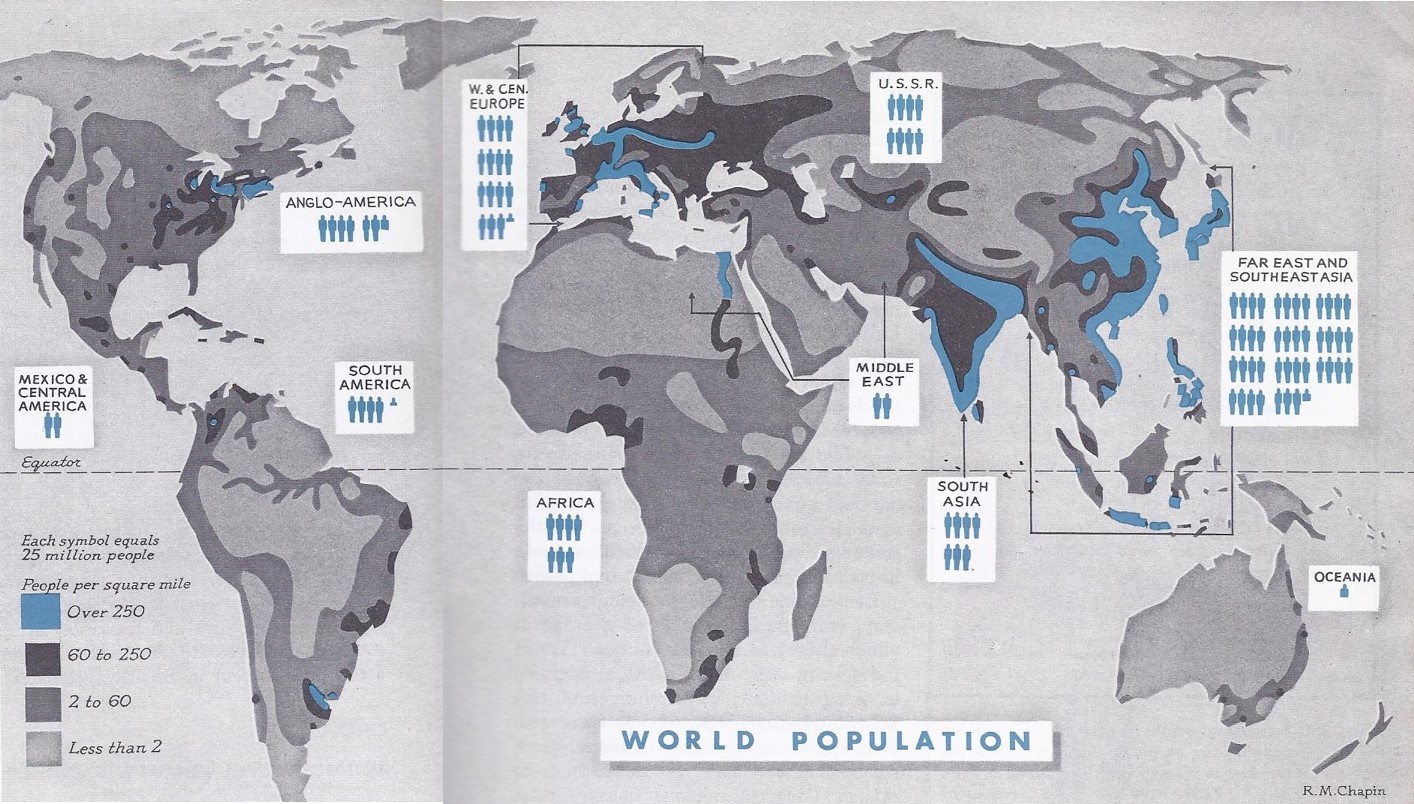
The right to vote was extended. By the beginning of our century property qualifications for voting had been greatly reduced or abolished. Practically all men in western European countries had the right to vote. Moreover, the use of the secret ballot gave voters greater freedom to express their opinions. Granting women the right to vote took longer. Around the opening of the twentieth century, New Zealand and Australia granted women the right to vote. So, too, did Norway and Sweden. Not until the close of World War I, however, did women in England get this right. The delay was in spite of the protests of enthusiastic women reformers commonly referred to as suffragettes (from the word suffrage, or the right to vote). When Parliament at first declined their demands, some of these women took part in parades or went on hunger strikes or even broke windows to call attention to their cause. Although granted the right in some states earlier, women throughout the United States were given the vote by the addition of the Nineteenth Amendment to the American Constitution in 1920.
Women entered business and professional life. During the nineteenth century thousands of women worked long hours in factories and even in mines, but there were few women in business. Three inventions which were made late in that century, however, paved the way for women to enter the world of business. These inventions were the typewriter, the adding machine and the telephone. As these came into ever-widening use, more and more women were employed as typists, secretaries, accountants and telephone operators.
Grudgingly, European universities allowed women to enroll as students and women slowly worked their way into professions such as law and medicine. The old idea that “woman’s place is in the home” and that “a woman has no place in a man’s world” died slowly. Labour shortages during World Wars I and II were responsible for great increases in the employment of women.

Education moved forward in Western countries. The 1900’s brought an increase in public education. Church and private schools continued their services, but the national governments in most European countries took a more active part in the running of schools. Public education made its greatest progress in the United States.
Elementary schooling became compulsory, with gradual raising of the age at which children could leave school. Training schools were established to improve teaching methods. The number of students attending high schools increased. Courses in agriculture, industrial arts, science and commercial subjects were added. Today, in our own country, most boys and girls expect to continue their studies through high school.
Technical schools for advanced training in the sciences and engineering developed slowly, but late in the 1800’s engineering and scientific schools began to increase in number and size. For a time Germany led in the training of scientists and students came from other countries to German universities. In the early 1900’s, however, the United States took the lead, especially in advanced technical training.
Encouraging as these steps were, the world outlook in education was far from satisfactory. To most people in eastern Europe, Asia, Africa and South America, education was still a luxury. In India during the 1930’s, for instance, only about one-eighth of the people could read. Moreover, education in some European countries slipped backward. Dictators in Germany and Russia used their schools to strengthen their own power. Truth was deliberately twisted in an effort to whip up national enthusiasm in support of dictators and their programs.
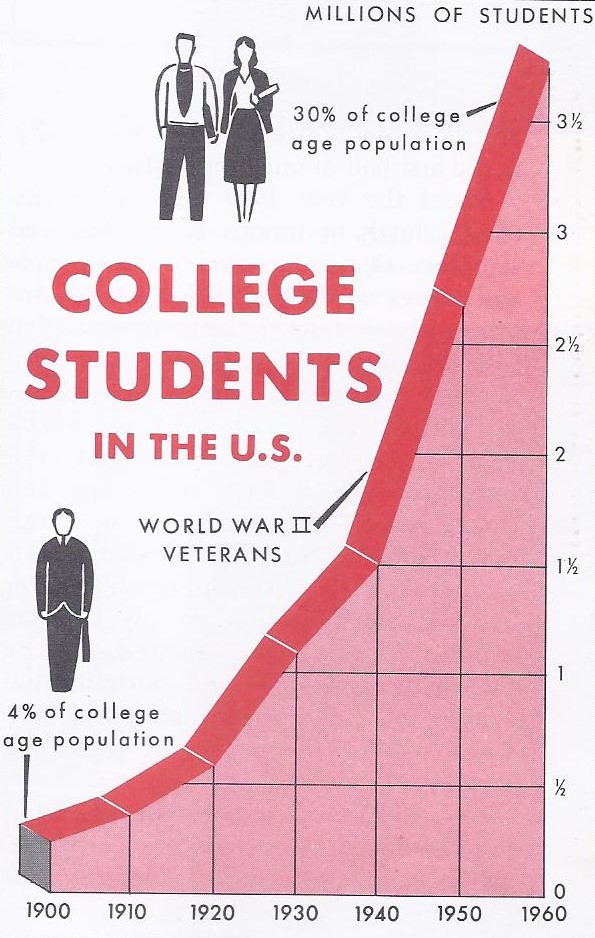
Twentieth century writers show concern over modern man’s problems. As discovered in the previously, changes in ways of living and significant events influence literature and the other arts. The continued growth of industrialization, the increase in large cities, the shrinking of our world in terms of time and space and two world wars have had profound effects on man’s outlook.
Early in the 1900’s, some writers in Europe and America continued to view man and his world hopefully. A few turned to dreamland or to the fairyland of their imagination for inspiration. Among these were Barrie of Scotland, who wrote Peter Pan and Maeterlinck of Belgium, who wrote The Blue Bird, but most writers were realists who were concerned with present-day problems and dwelt at length on the evils and injustices of modern society. They described the destruction and uselessness of war. Or they wrote about people, probing mercilessly into their character and motives. Stories had fewer heroes and more unpleasant characters. In general these writings reflected an uncertainty about the future of civilization. This point of view contrasted sharply with the enthusiasm and feeling of progress that many writers had expressed in the 1800’s.
Though the short story gained greatly in popularity, novels and plays continued to be important forms of writing. In America long historical novels were read by millions. Detective stories by British, French and American writers were equally popular. Writers of science fiction, such as H. G. Wells, had a hard time keeping ahead of actual scientific progress.
Not all literature was fiction. There was wide interest in books on history, science and travel. Swift communication and improved methods of printing stimulated the growth of newspapers and magazines, particularly in our own country. News magazines reported and analyzed the news. Magazines that condensed articles already published gained unheard-of circulation. More widespread education and increased leisure time made it possible for more people to enjoy the world’s literature than at any earlier time.
New schools of painting appeared. Man expresses his hopes, his feelings and his appreciations in painting, sculpture, architecture and music, as well as in literature. All these arts changed noticeably, some radically, in the first half of the century.
About the year 1900 there were two chief schools or groups of painters and sculptors. One group tried to show people and things as they actually looked. Another school showed them in ways that brought out their interesting points more strongly than would paintings of statues in “correct” proportions. By the 1920’s there was a third school that went even farther and used lines, colours and shapes not to represent people or things but to suggest ideas. The leader of this school was the Spanish-French painter and sculptor Pablo Picasso. By 1950 art exhibits the world over showed, side-by-side with landscapes and portraits and statues, odd but curiously interesting canvases and twisted masses of stone and metal.
New styles arose in the other arts. During the 1800’s there had been a revival of the Gothic style of architecture. Rich people built homes like medieval castles while churches were built like cathedrals of the 1200’s. In this century architecture has become simpler and more useful. Architects have developed new plans for buildings and homes and made wider use of such materials as concrete, metal and glass. A world leader in architecture was the American Frank Lloyd Wright, designer of churches, office buildings and houses. Well-known among his creations are a house that looks from above like the spread wings of an airplane; a business office where curves replace straight lines and corners; and a church that instead of a steeple has a sharply pointed roof that suggests hands upraised in prayer.
There have been changes in music, too. Two of the great composers of all time, the German Richard Strauss and the Finnish Jean Sibelius, lived on into the mid 1900’s. So did the Russian pianist-composer of romantic music, Sergei Rachmaninoff. The Russian Igor Stravinsky went much farther than Wagner and Strauss in his free use of harsh sounds as well as simple melodies in building up musical climaxes. In America, Howard Hanson, Aaron Copland and other composers wrote serious modern music. America is perhaps better known musically for its development of jazz. The original tunes and dance rhythms of jazz won listeners not only in America but in other countries too.
